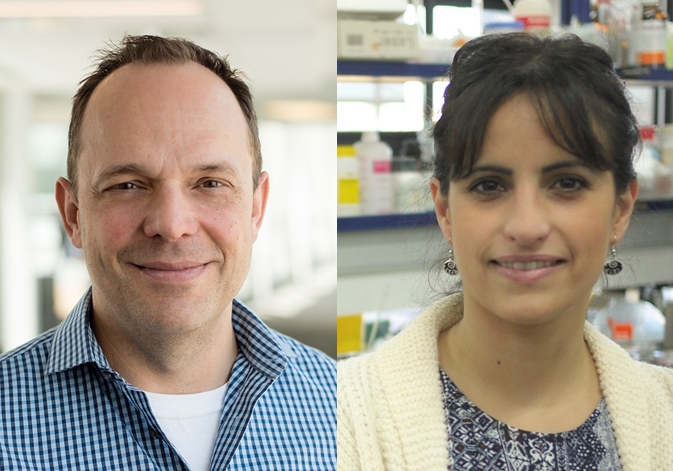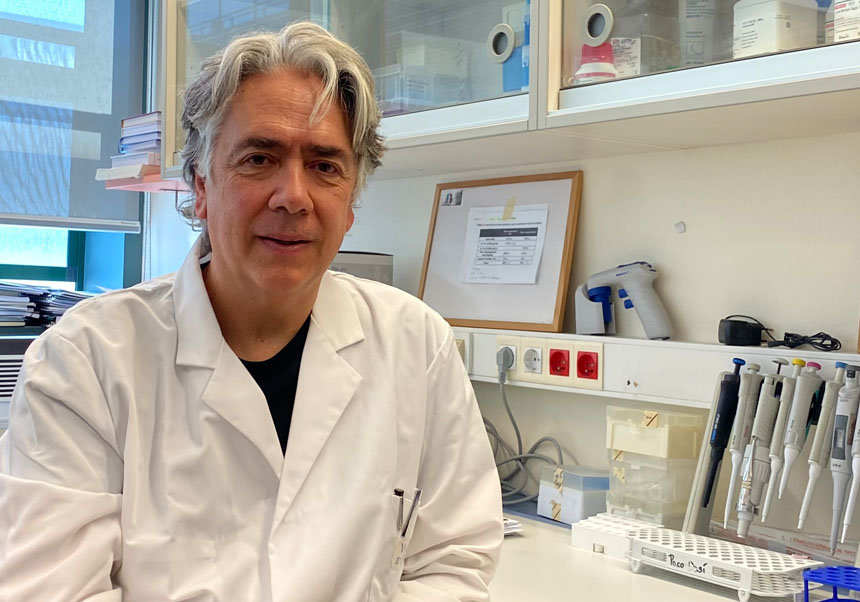Researcher Lucía Hipólito collaborates in a study to block the emotional component of pain
- Scientific Culture and Innovation Unit
- April 16th, 2019

Lucía Hipólito Cubedo, lecturer from the Departament of Pharmacy and Pharmaceutical Technology and Parasitology of the Universitat de València, has taken part in a research with several universities from the United States. In this research, they have detected for the first time which mechanism allows chronic pain to induce the individuals who suffer from it in a negative emotional state. The conclusions of the research, carried out in test rats and published in Neuron journal, will help in the development of less addictive therapies to deal with this type of pain.
The research team lead by José Morón, researcher of the Anaesthesiology, Neuroscience and Psychiatry Department of Washington University, has observed that the activation of the neurones that release dynorphin, a neurotransmitter the nervous system produces as a modulator of pain, is key for the changes the nucleus accumbens experiences as a consequence of pain. This nucleus is a part of the brain that has a key role in motivation and the processing of addiction, pain and activities that lead to pleasure, like eating or sex.
The emission of dynorphin is transformed into changes in behaviour related to a negative state or to anhedonia -being incapable of feeling pleasure, motivation or satisfaction- that characterises states of anxiety or depression associated to chronic pain. This situation has serious consequences in the quality of life of the patients who suffer from this symptom and can also worsen their perception of malaise.
In the research «Pain-Induced Negative Affect Is Mediated via Recruitment of The Nucleus Accumbens Kappa Opioid System», some test rats were given a substance that caused a persistent inflammation in a leg. With a motivation system based on obtaining sugar, the research team proved those with an inflammated leg had less motivation to get the sugar than those without this condition. Then, when they managed to block the neurotransmission of the k-opioid receptor or dynorphin in the brain, these rats were recovered motivation to get the sugar and acted just like the other rats that didn’t have the condition.
In addition, in the research lead by José Morón, who will give a conference in the Universitat de València on the 6th of May, a methodology called “small animal positron emission tomography (PET)” was used in order to get a representation of the brain activity. This has shown that the rats that were in pain had less dynorphin activity in the area of the brain linked to emotions and motivation.
With these results, new lines of research are open to fight against negative emotional states, as well as to fight involuntary opioid overdoses or the presence of other graver neuropsychiatric diseases linked to chronic pain. ‘Many times, we forget there are people in pain who also have an involuntary psychological discomfort caused by the pain they’re experiencing’, claims Lucía Hipólito. She also adds there’s still more research to do in the future in order to test the results of this study on real people.
The researcher from the Faculty of Pharmacy has also said this article ‘has a very positive impact in the research we do in our laboratory. We study the interaction of pain-alcoholism and the mechanism of the brain that produces this association, which, strangely enough, is also the opioid system’, she claimed.
Article:
Massaly et al., «Pain-Induced Negative Affect Is Mediated via Recruitment of The Nucleus Accumbens Kappa Opioid System», Neuron (2019)
















